The purpose of the sound velocity correction editor is to alter or create sound velocity profile files which can be used by Hydromagic to correct soundings. Depending on the waters you are surveying in a sound velocity profile is needed in either Hydromagic or your sounder. However, when your solely survey in fresh water, you can forget about this toolm since echo sounders are by default calibrated to give correct results in fresh water.
When using your echo sounder in salt or brackish water, there is a small error in the measurement since the speed of sound in these waters is different then the one used in fresh water. The speed of sound can be measured with a sound velocity profiler, or calculated using the built in speed of sound calculator. There is no limit on the number of profiles you can define in Hydromagic, which means you can have a separate sound velocity profile for different areas. For surveys in fresh water the default speed of sound is used: 1500.0 meters per second.
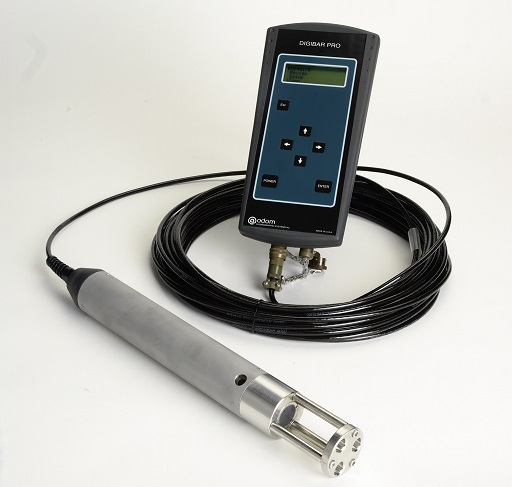
A portable sound velocity profiler: the Odom Digibar Pro.
Instead of using a real-time sound velocity profiler or a sound velocity correction profile, it is also possible to adjust the sound velocity manually during the survey. When using the "Hydromagic Manual Sound Velocity plugin" you can read the current value from a sound velocity profiling device and enter it in Hydromagic during the survey.
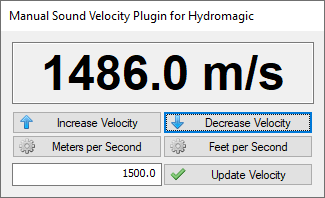
Use the manual sound velocity plugin to adjust sound velocity during the survey.
After starting the sound velocity correction editor, you will start with a blank profile. You can add new records to this profile or open an existing profile file for modification. You can open or save file via the "File" menu. When opening the example sound velocity file which ships with the Hydromagic ("example.vel"), the editor should look like this:
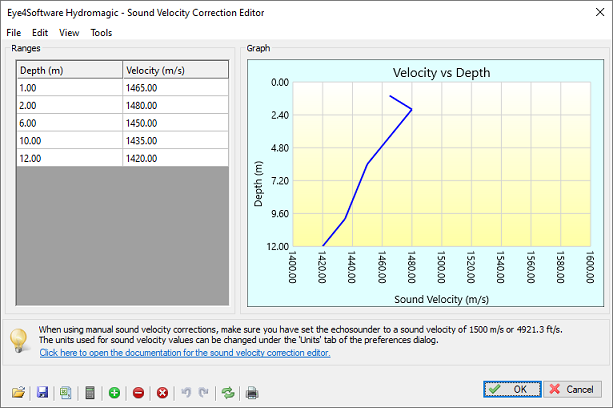
Use the sound velocity editor to generate or alter sound velocity profile files when applicable.
Hydromagic SVP files are stored as simple ASCII files, so you should also be able to edit these files with your favorite text editor. Please note that the depths and sound velocity values are in meters, so when you prefer feet you should probably use the SVP editor instead:
1.00 1465.00
2.00 1480.00
6.00 1450.00
10.00 1435.00
12.00 1420.00
ASCII Contents of a Hydromagic sound velocity profile file.
You can add new records to the table by clicking the "Plus" button, or by pressing the "Insert" key on your keyboard. A new data row will be added in which you can enter a new depth - sound velocity pair. To remove a record, select it in the table and press the "Delete" key on your keyboard or by clicking the "Minus" button. To clear the entire table, click the button marked with an "X" or select "Remove All..." from the "Edit" menu.
To undo or redo an operation you can use the "Undo" and "Redo" buttons in the tool bar, or select the "Undo" and "Redo" options from the "Edit" menu. (or use the dedicated shortcut keys for these operations: Control-Z and Control-Y).
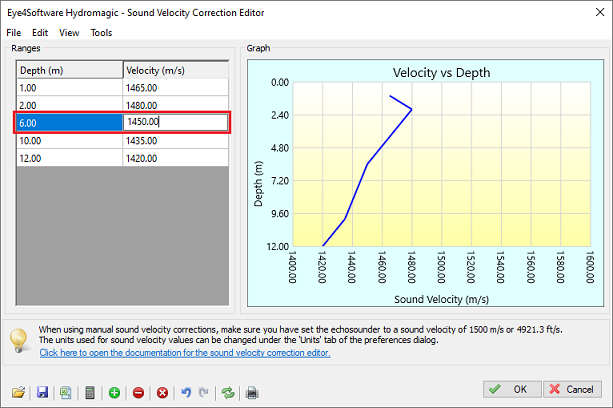
Double-click on a table cell to alter its contents.
When the sound velocity is unknown, but the salinity and water temperature is known, you can use the build in sound velocity calculator by clicking the "Calculator" button, or by selecting "Calculate Velocity..." from the "Tools" menu. You can also use this tool separately for scientific purposes. The formulas supported by this tool include:

A built in sound velocity calculator that uses temperature and salinity.
The sound velocity profile editor has a simple built-in ASCII importing tool to allow you to import sound velocity profiles exported by either a sound velocity profiler or third party software. This importing tool assumes that the data is stored in a file that contains two or more columns. All you have to do is select the file, select the field separator and enter the field numbers for the depth and sound velocity values in the file.
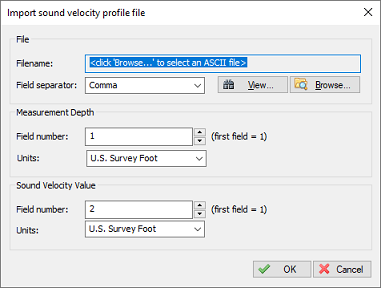
Import a sound velocity from a profiler device or third party software.
When all depth - sound velocity pairs have been entered into the table, select the "Save..." option from the "File" menu. After saving the file, it can now be selected in the sound velocity and dynamic draft corrections page. In this page, you have to select the speed of sound used by the sounder as well. The default is 1500.0 meters per second or 4921 feet per second:
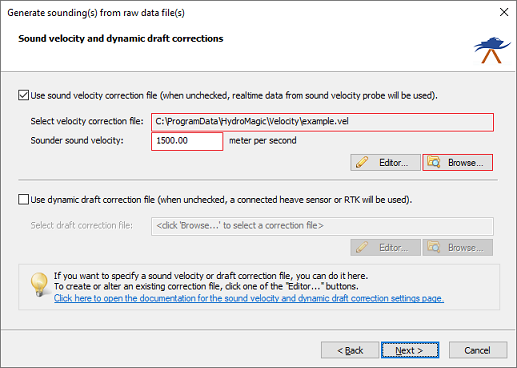
Select the file and the speed of sound used by your echo sounder (normally: 1500 m/s).